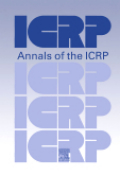
ICRP publication 117: radiological protection in fluoroscopically guided procedures performed outside the imaging department v. 40 issue 6
An increasing number of medical specialists are using fluoroscopy outside imaging departments. There has been general neglect of radiological protection coverage of fluoroscopy machines used outside the imaging departments. Lack of radiological protection training of those working with fluoroscopy outside imaging departments can increase the radiation risk to workers and patients. Procedures such as endovascular aneurysm repair (EVAR), renal angioplasty, iliac angioplasty, ureteric stent placement, therapeutic endoscopic retrograde cholangio-pancreatography (ERCP) and bile duct stenting and drainage have the potential to impart skin doses exceeding 1 Gy. Although tissue reactions among patients and workers from fluoroscopy procedures have so far been reported only in interventional radiology and cardiology, the level of usage of fluoroscopy outside radiology departments creates potential for such injuries. A brief accountof the health effects of ionising radiation and protection principles is presented in Section 2. Section 3 deals with general aspects of workers' and patient protection that are common to all whereas specific aspects are covered in Section 4 separately for vascular surgery, urology, orthopaedic surgery, obstetrics and gynaecology, gastroenterology and hepato-biliary system,anaesthetics and pain management. Although sentinel lymph node biopsy (SLNB) involves use of radio-isotopic methods rather than fluoroscopy, this procedure being performed in operation theatre is covered in this document as ICRP is unlikely to have another publication on this topic. Information on level of radiation doses to patients and workers and dose management is presented against each speciality. Issues connected with pregnant patient and pregnant worker are covered in Section 5. Although the Commission has recently published a document on training, specific needs for the target groups in terms of orientation of training, competency of those who conduct and assess specialists and guidelines on curriculum are provided in Section 6. The document emphasizes that patient dose monitoring is essential whenever fluoroscopy is used. Recommendations for manufacturers to develop systems to indicate patient dose indices with the possibilityto produce patient dose reports that can be transferred to the hospital network are provided as are also shielding screens that can be effectively used forprotection of workers using fluoroscopy machines in operating theatres without hindering the clinical task. INDICE: SUMMARY POINTS * 1. What is the motivation for this report? * 1.1.Which procedures are of concern and who is involved? * 1.2. Who has the potential to receive high radiation doses? * 1.3. Lack of training, knowledge, awareness and skills in radiological protection * 1.4. Patient versus occupationalradiation doses * 1.5. Fear and overconfidence * 1.6. Training * 1.7. Why this report? * 1.8. References * 2. HEALTH EFFECTS OF IONISING RADIATION * 2.1. Introduction * 2.2. Radiation exposure in context * 2.3. Health effects of ionising radiation * 2.3.1. Tissue reactions * 2.3.2. Stochastic effects * 2.3.3. Individual differences in radiosensitivity * 2.4. References * 3. PATIENT AND OCCUPATIONAL PROTECTION * 3.1 General methods and principles of radiological protection * 3.2. Requirements for the facility * 3.3. Common aspects of patient and occupational protection * 3.3.1. Patient specific factors * 3.3.2. Technique factors * 3.4. Specific aspects of occupational protection * 3.4.1. Shielding * 3.4.2. Individual monitoring * 3.5. References * 4. SPECIFIC CONDITIONSIN CLINICAL PRACTICE * 4.1. Vascular surgery * 4.1.1. Levels of radiation dose * 4.1.2. Radiation dose management * 4.2. Urology * 4.2.1. Levels of radiation dose * 4.2.2. Radiation dose management * 4.3. Orthopaedic surgery * 4.3.1.Levels of radiation dose * 4.3.2. Radiation dose management * 4.4. Obstetricsand gynaecology * 4.4.1. Levels of radiation dose * 4.4.2. Radiation dose management * 4.5. Gastroenterology and hepato-biliary system * 4.5.1. Levels of radiation dose * 4.5.2. Radiation dose management * 4.6. Anaesthetics and pain management * 4.7. Sentinel lymph node biopsy (SLNB) * 4.7.1. Levels of radiation dose * 4.7.2. Radiation dose management * 4.8. References * 5. PREGNANCY AND CHILDREN * 5.1. Patient exposure and pregnancy * 5.2. Guidelines for patients undergoing radiological examinations/procedures at child bearing age * 5.3. Guidelines for patients known to be pregnant * 5.4. Occupational exposure and pregnancy * 5.5. Procedures in children * 5.5.1. Levels of radiation dose * 5.5.2. Radiation dose management * 5.6. References * 6. TRAINING * 6.1. Introduction * 6.2. Curriculum * 6.3. Who should be the trainer? * 6.4. How much training? * 6.5. Recommendations on training * 6.5. References * 7. Recommendations* ANNEX A. DOSE QUANTITIES AND UNITS * A.1. Quantities for assessment of patient doses * A.2. Quantities for occupational dose assessment * A.3. References*
- ISBN: 978-0-7020-5226-2
- Editorial: Saunders
- Encuadernacion: Rústica
- Páginas: 104
- Fecha Publicación: 01/04/2012
- Nº Volúmenes: 1
- Idioma: Inglés
